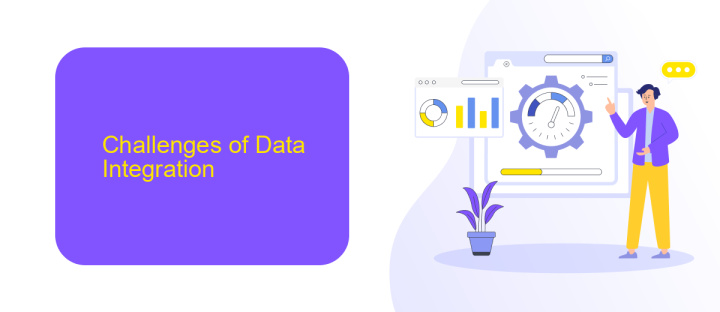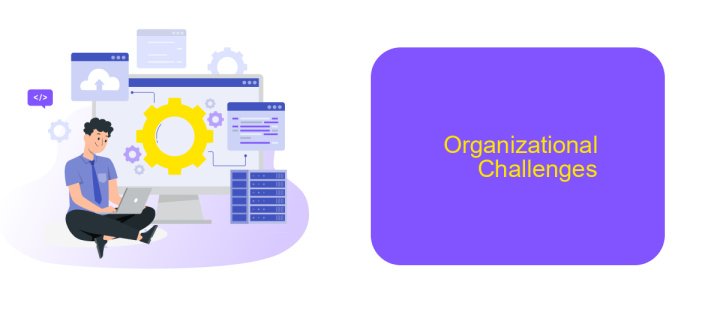Data Integration Challenges
Data integration is a critical process for organizations aiming to harness the full potential of their data. However, it comes with its own set of challenges, such as data silos, inconsistent formats, and security concerns. This article explores these common obstacles and provides insights into effective strategies for overcoming them, ensuring seamless and efficient data integration.
Introduction
Data integration is a critical aspect of modern business operations, enabling seamless communication and data flow between disparate systems. As organizations grow and adopt various technologies, integrating these systems becomes increasingly complex. Effective data integration ensures that accurate and timely information is available for decision-making, enhancing operational efficiency and strategic planning.
- Data silos: Isolated systems that hinder data sharing.
- Data quality: Ensuring accuracy, consistency, and reliability of data.
- Scalability: Adapting integration solutions to growing data volumes.
- Security: Protecting sensitive data during integration processes.
- Real-time integration: Achieving timely data updates across systems.
One solution to these challenges is leveraging integration platforms like ApiX-Drive. ApiX-Drive simplifies the integration process by providing a user-friendly interface and pre-built connectors for various applications. This reduces the technical burden on IT teams and ensures that data integration is efficient and reliable. By addressing common data integration challenges, businesses can achieve better data visibility and drive more informed decision-making.
Challenges of Data Integration

Data integration poses several challenges that organizations must navigate to ensure seamless data flow across systems. One primary challenge is dealing with diverse data formats and sources, which can lead to compatibility issues. Organizations often use various software platforms, databases, and applications, making it difficult to standardize data. Additionally, data quality is a significant concern, as inconsistent or incomplete data can undermine the effectiveness of integration efforts. Ensuring data accuracy, consistency, and completeness requires robust data governance and validation mechanisms.
Another critical challenge is the complexity of integration processes, which can be time-consuming and resource-intensive. This is where integration platforms like ApiX-Drive come into play. ApiX-Drive simplifies the integration process by providing a user-friendly interface and pre-built connectors for various applications, reducing the need for extensive coding and technical expertise. Security and compliance also pose significant challenges, as integrated systems must adhere to regulations and protect sensitive data from breaches. Ensuring secure data transmission and storage while maintaining compliance with standards like GDPR is crucial for successful data integration.
Technical Challenges

Data integration presents several technical challenges that organizations must address to ensure seamless operations. These challenges often stem from the complexity of integrating diverse systems, data formats, and protocols.
- Data Heterogeneity: Different systems often use varied data formats, making it difficult to achieve uniformity.
- Scalability Issues: As data volumes grow, maintaining performance and reliability becomes increasingly challenging.
- Data Quality: Ensuring the accuracy, consistency, and completeness of integrated data is a persistent issue.
- Security Concerns: Protecting sensitive data during transfer and integration processes is critical.
- API Management: Efficiently managing and integrating numerous APIs can be complex and time-consuming.
Tools like ApiX-Drive can significantly alleviate these challenges by providing a user-friendly platform to manage integrations. ApiX-Drive simplifies the process of connecting various applications and automates data workflows, ensuring data consistency and reducing manual intervention. By leveraging such tools, organizations can streamline their data integration processes and focus on deriving actionable insights from their data.
Organizational Challenges

Organizational challenges in data integration often stem from a lack of clear communication and alignment between departments. When various teams use different tools and processes, it becomes difficult to create a unified data strategy. This can lead to data silos, where information is isolated and not accessible to all relevant stakeholders.
Another significant challenge is the resistance to change. Employees may be accustomed to their existing workflows and hesitant to adopt new systems or processes. This can slow down the integration process and reduce its overall effectiveness. Ensuring that everyone understands the benefits of data integration is crucial for overcoming this resistance.
- Misalignment between departments
- Resistance to change
- Data silos
- Lack of training and resources
To address these challenges, organizations can utilize integration platforms like ApiX-Drive. This service simplifies the process of connecting various applications and automating workflows, thereby enhancing collaboration and data accessibility. Providing adequate training and resources can also help employees adapt to new systems more smoothly, ensuring a successful data integration strategy.
Overcoming Challenges and Best Practices
Overcoming data integration challenges requires a strategic approach and adherence to best practices. One essential step is to establish a clear integration strategy, which involves understanding the data sources, defining data standards, and setting up robust data governance policies. Regularly updating and maintaining documentation ensures that all stakeholders are on the same page and can troubleshoot issues effectively. Moreover, leveraging scalable and flexible integration tools can significantly ease the process. For instance, using ApiX-Drive can simplify the integration of various applications and automate data workflows, reducing manual effort and minimizing errors.
Another critical practice is ensuring data security and compliance. Implementing encryption, access controls, and regular audits can protect sensitive information from breaches. Additionally, it is vital to perform thorough testing and validation of integration processes to identify and resolve issues before they impact operations. Continuous monitoring and optimization of data integration workflows help in maintaining efficiency and reliability. By adopting these best practices, organizations can overcome data integration challenges and achieve seamless, accurate, and secure data flows across their systems.
FAQ
What are the common challenges faced during data integration?
How can data quality issues be addressed in data integration?
What role does data transformation play in data integration?
How can automation help in data integration processes?
What are the best practices for ensuring data security during integration?
Time is the most valuable resource in today's business realities. By eliminating the routine from work processes, you will get more opportunities to implement the most daring plans and ideas. Choose – you can continue to waste time, money and nerves on inefficient solutions, or you can use ApiX-Drive, automating work processes and achieving results with minimal investment of money, effort and human resources.

